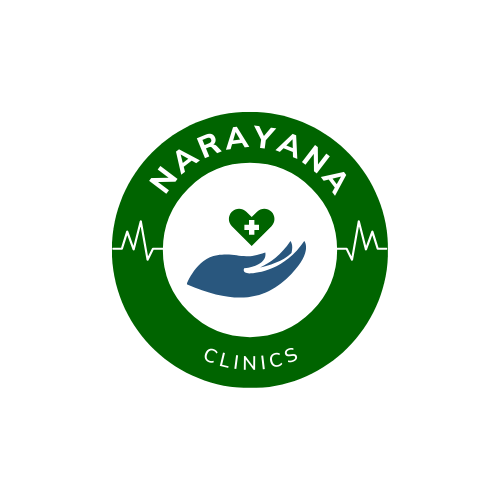Lifestyle Counselling
Lifestyle counseling involves guiding individuals toward healthier habits and behaviors to improve their physical, mental, and emotional well-being. The process helps clients make sustainable changes in areas like diet, exercise, sleep, stress management, and mental health. It’s often used as part of holistic health practices, including naturopathy, psychotherapy, health coaching, and wellness counseling.

Detailed Procedure of Lifestyle Counselling
Here’s a step-by-step guide to the detailed procedure:
1. Initial Consultation and Assessment
The first step in lifestyle counseling is understanding the client’s current habits, health status, and goals.
a) Health History Review:
- The counselor gathers detailed information about the client’s medical history, including past and current health conditions, medications, surgeries, allergies, and family history of diseases. This helps identify potential health risks and areas of focus.
b) Lifestyle Audit:
- The counselor conducts a comprehensive audit of the client’s current lifestyle, focusing on key areas:
- Diet and nutrition: What does the client eat regularly? Do they follow any specific diet plans? Are there any deficiencies?
- Physical activity: What level of exercise or physical activity do they engage in? Are they sedentary or active?
- Sleep patterns: How many hours of sleep does the client get? Do they struggle with insomnia, or feel fatigued?
- Stress levels: How does the client manage stress? Are there specific stressors in their life, such as work, family, or health issues?
- Substance use: Does the client smoke, drink alcohol, or use any recreational drugs?
- Mental health: Are there signs of anxiety, depression, or other mental health issues?
c) Goal Setting:
- The counselor and client work together to identify the primary health and wellness goals. These can be broad (e.g., “improve overall well-being”) or specific (e.g., “lose 10 kg,” “reduce stress,” or “improve sleep quality”). Goals are usually broken down into manageable steps.
d) Behavioral Assessment:
- The counselor evaluates the client’s motivation and readiness to change, identifying potential barriers to change such as lack of time, emotional factors, or unhealthy habits.
2. Customized Lifestyle Plan Development
After the assessment, the counselor develops a personalized lifestyle plan tailored to the client’s needs and goals.
a) Diet and Nutrition Counseling:
- Based on the client’s health needs, the counselor provides recommendations for a balanced diet. This may include:
- Increasing intake of whole foods such as fruits, vegetables, whole grains, and lean proteins.
- Reducing processed foods, sugar, and unhealthy fats.
- Portion control and mindful eating practices.
- Addressing any nutrient deficiencies (e.g., recommending supplements for vitamins D, B12, iron, etc.).
- Introducing specialized dietary plans if needed (e.g., for weight loss, managing diabetes, or improving heart health).
b) Physical Activity Recommendations:
- The counselor creates an exercise plan tailored to the client’s fitness level, health conditions, and personal preferences. This may include:
- Cardiovascular exercises like walking, swimming, or cycling to improve heart health and burn calories.
- Strength training to build muscle mass and bone density.
- Flexibility exercises like yoga or stretching to improve mobility.
- Exercise frequency: The client is usually encouraged to engage in physical activity for at least 30 minutes a day, 5 days a week.
c) Stress Management Techniques:
- The counselor teaches strategies to help the client manage and reduce stress. These may include:
- Mindfulness and meditation: Practicing mindfulness meditation can reduce anxiety and increase emotional resilience.
- Breathing exercises: Techniques like diaphragmatic breathing or box breathing help control the body’s stress response.
- Progressive muscle relaxation: This helps release tension in the body and calm the mind.
- Time management and goal-setting: Learning to prioritize tasks and set realistic goals can reduce the sense of being overwhelmed.
d) Sleep Hygiene Counseling:
- For clients with sleep issues, the counselor offers guidance on improving sleep quality:
- Establishing a regular sleep schedule (going to bed and waking up at the same time every day).
- Creating a relaxing bedtime routine (avoiding screens before bed, using relaxation techniques).
- Optimizing the sleep environment (cool, quiet, and dark room).
- Limiting stimulants like caffeine and alcohol close to bedtime.
e) Mental Health Support:
- If needed, the counselor provides emotional support and helps the client manage negative thought patterns or behaviors.
- Cognitive Behavioral Therapy (CBT) techniques may be used to challenge and change unhelpful thoughts.
- Journaling: The client is encouraged to keep a journal to reflect on emotions and thoughts.
- Positive affirmations: Practicing self-affirming statements can increase self-esteem and motivation.
f) Substance Use Counseling:
- The counselor helps clients manage and reduce unhealthy habits like smoking or excessive alcohol consumption.
- Harm reduction strategies: For clients not ready to quit, the counselor may suggest reducing intake.
- Supportive resources: The client may be referred to cessation programs or given educational materials on quitting.
3. Behavioral Change Strategies
The key to effective lifestyle counseling is helping the client implement sustainable behavioral changes.
a) Motivational Interviewing:
- The counselor uses motivational interviewing techniques to increase the client’s motivation and commitment to change. This involves exploring ambivalence about change and identifying intrinsic motivations for healthier behaviors.
b) SMART Goal Setting:
- Goals are broken down into SMART (Specific, Measurable, Achievable, Relevant, Time-bound) goals to make them more attainable. For example, instead of “exercise more,” a SMART goal would be: “Walk 30 minutes every day, five days a week.”
c) Habit Formation Techniques:
- The counselor teaches strategies for building new, healthier habits and breaking old, unhealthy ones. Techniques include:
- Habit stacking: Pairing a new habit with an existing one (e.g., stretching after brushing teeth).
- Rewards and reinforcement: Celebrating small achievements to encourage consistent behavior.
d) Behavior Tracking:
- The client may be encouraged to keep track of their behavior using:
- Food diaries to monitor eating habits.
- Exercise logs to track physical activity.
- Mood journals to identify emotional triggers.
- Sleep diaries to track sleep patterns.
4. Implementation and Follow-Up
Once the lifestyle plan is in place, the next phase is to implement the changes and monitor progress over time.
a) Regular Check-ins:
- Follow-up sessions (weekly, biweekly, or monthly) are scheduled to monitor the client’s progress. The counselor reviews the changes implemented and addresses any challenges the client may face.
b) Progress Tracking:
- The counselor tracks the client’s progress using measurable metrics, such as weight loss, improvement in blood pressure, reduced stress levels, or improved sleep quality. They may also use lab results, if applicable, to monitor biomarkers (e.g., cholesterol, glucose levels).
c) Adjustments to the Plan:
- If the client faces difficulties or plateaus, the counselor adjusts the lifestyle plan. For example:
- Changing the exercise routine if the client finds it too challenging.
- Tweaking the diet plan if certain recommendations are difficult to follow.
- Introducing new stress management techniques if existing ones are not effective.
5. Long-Term Maintenance and Support
The final stage of lifestyle counseling is maintaining the positive changes and making them permanent.
a) Relapse Prevention:
- The counselor teaches the client strategies for preventing relapses into unhealthy behaviors:
- Identifying triggers: Recognizing situations that lead to unhealthy habits and developing coping strategies.
- Developing action plans: Creating plans for dealing with setbacks and maintaining progress during challenging times.
b) Encouraging Self-Efficacy:
- The goal is to empower the client to take control of their own health. This involves:
- Building the client’s confidence in their ability to maintain changes.
- Encouraging independence in setting and achieving new health goals.
c) Ongoing Support:
- Even after achieving their initial goals, clients may continue periodic sessions to receive ongoing support, motivation, and guidance.
Conclusion
Lifestyle counseling is a comprehensive and personalized approach to health that addresses the physical, emotional, and mental aspects of well-being. The detailed process includes a thorough assessment of the client’s current lifestyle, the development of a tailored plan, behavioral change strategies, and long-term support to ensure sustainable improvement. By focusing on gradual, manageable changes, lifestyle counseling helps individuals take control of their health and achieve lasting wellness.

